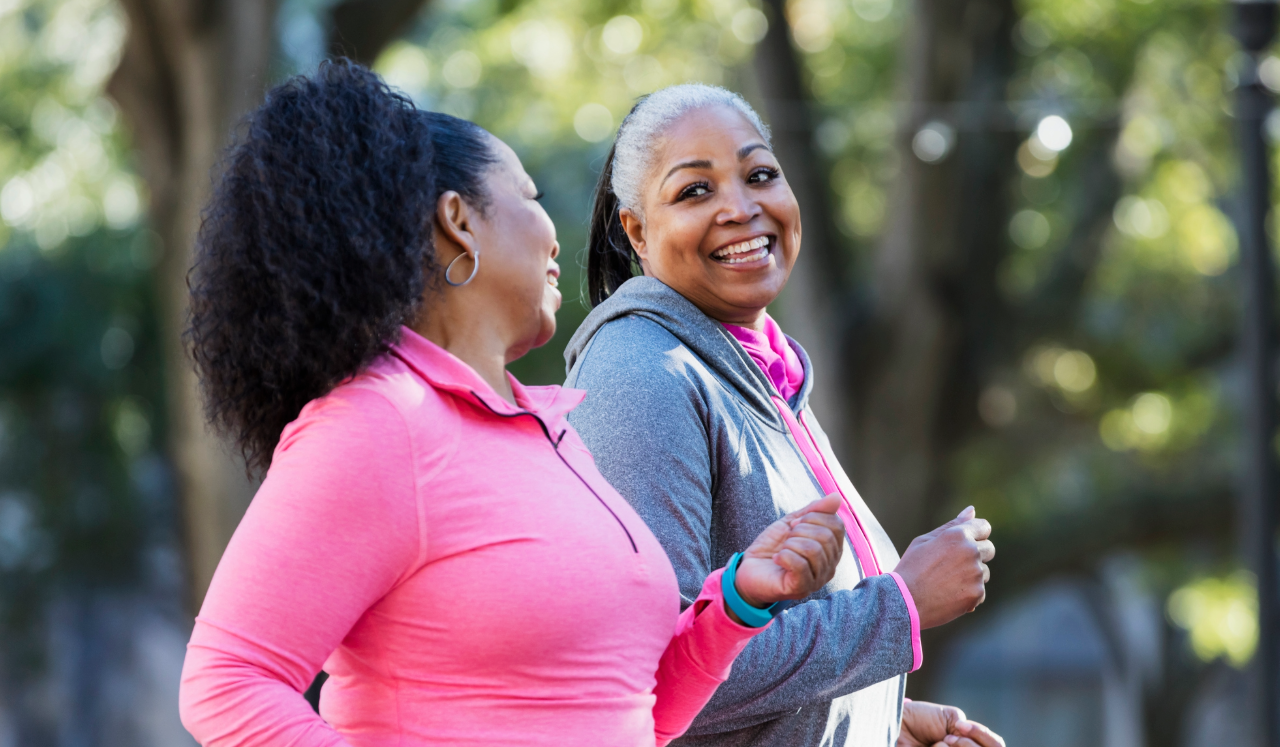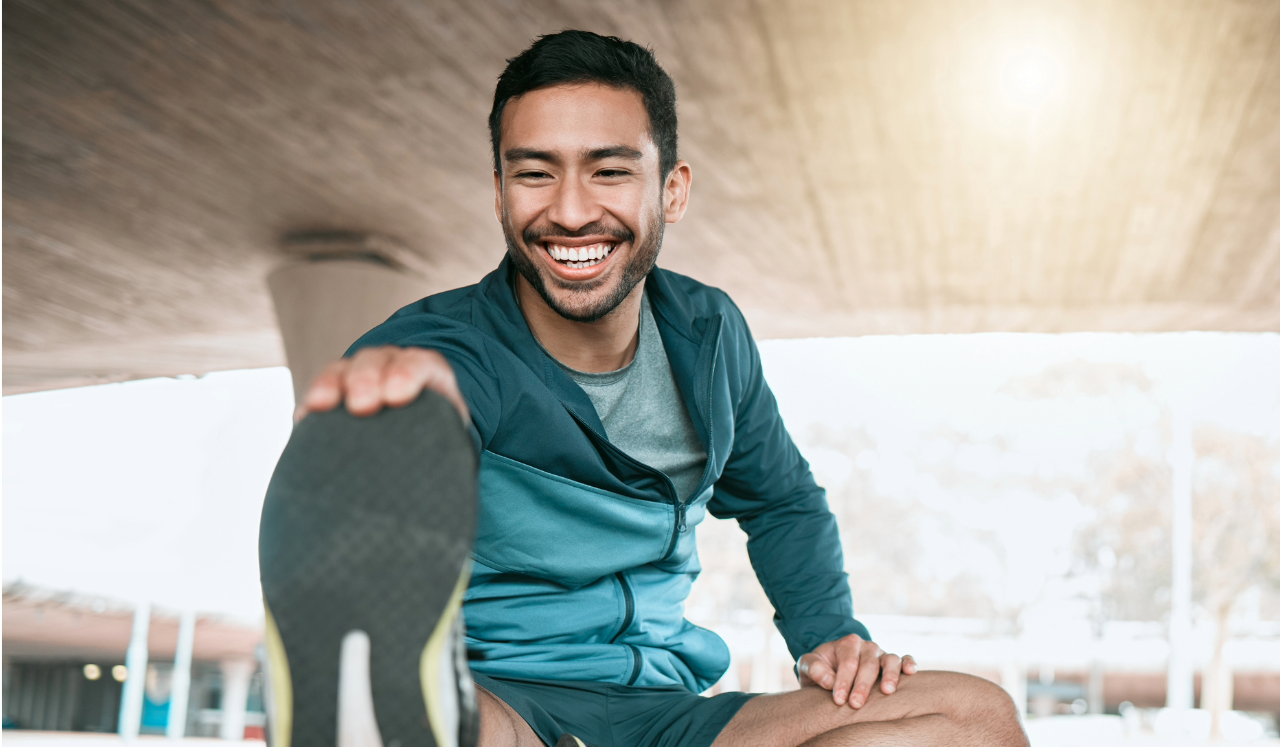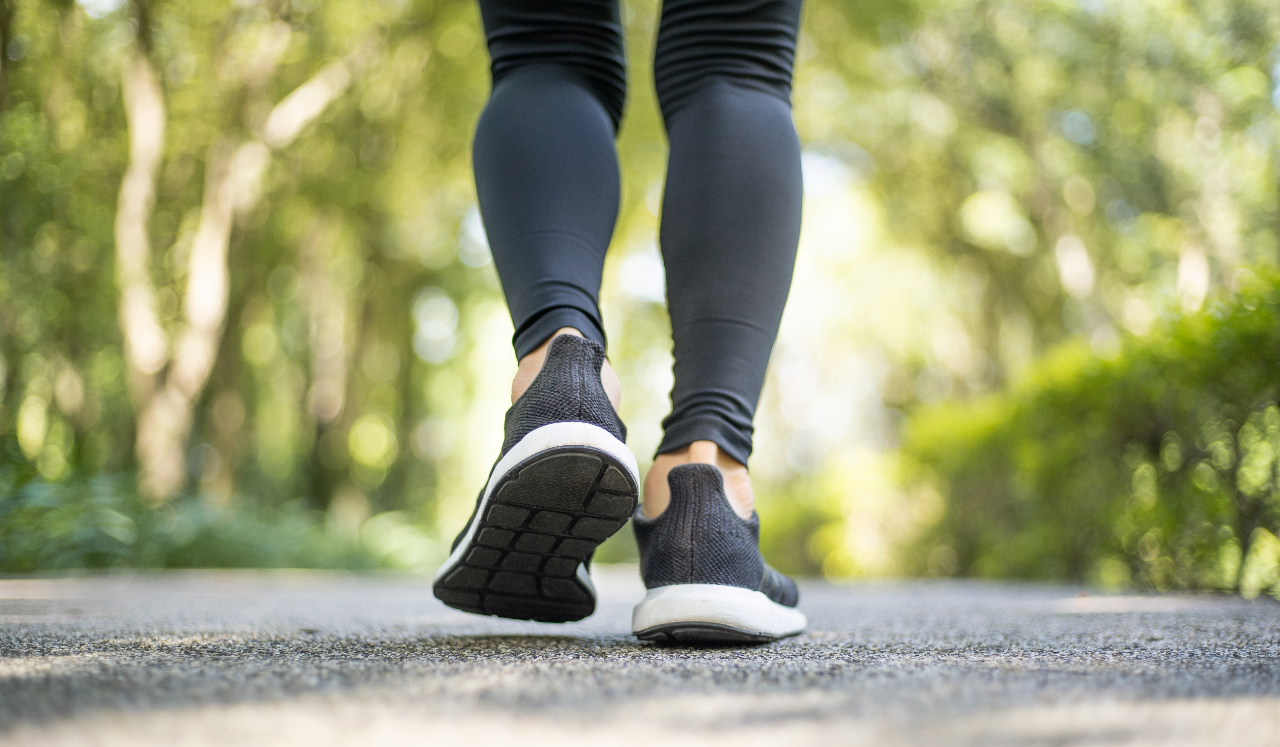The number of steps you take in a day can transform your overall health. “For quality of life, walking is one of the easiest things we can do,” says Dr. Justin Bickford, PT, DPT, OCS, FAAOMPT, a traveling physical therapist for Memorial Hermann.
Bickford shares insights about how the steps you take can help you to be fit and impact your health in a positive way.
Good health doesn't require 10,000 steps a day. “My rule of thumb is 5,000 steps a day, every day,” Bickford says. “For the general healthy population, 5,000 to10,000 steps is a realistic daily goal.”
Your doctor may recommend fewer steps if you’ve had a knee replacement, heart problems or other health issues.
Step it up slowly. If you’re not currently meeting a daily step goal, you should build your count slowly: by 10% each week. “So, if you normally walk one mile (about 2,000 steps), you should increase it first to 1.1 miles,” Dr. Bickford says. “If you do too much too soon, you increase your risk of injury.”
Running or walking one mile burns the same number of calories. “The difference is that walking a mile takes longer than running one,” he says.
Drink water before you get active. “Otherwise, you could get dehydrated quickly,” Bickford says, “You’ll have a better walk if you’re sufficiently hydrated in advance.”
Weight loss is just one of many walking perks. Not only do you burn calories, but your overall health and digestion improve, and the risks of diabetes, sleep apnea, acid reflux and high blood pressure fall. All that leads to a longer, healthier and a more fulfilling life. “The main benefit is you extend your longevity,” Bickford says.
Meeting your daily step goal could increase life expectancy. “A common factor for blue zones (areas where more people live to be over 100 around the world) is that people there walk everywhere.”
You may notice less day-to-day pain. “For every pound you lose, you take four pounds of pressure off your hips, knees and lower back so your joints don’t have to work as hard,” he says.
Walking can speed up recovery. “Your blood pumps, which carries nutrients to injuries of your lower body, including hips, knees and feet,” he says. “That’s one reason hospitals want to get you up and walking soon after surgery.”
Walking improves balance. “When fall risk goes up, your longevity goes down,” Bickford says. “But walking improves your balance.” Check with your doctor if you’re concerned about falls.
You don't have to sweat it. To avoid the heat of the day, you can walk before sunrise, after sunset or inside a mall. “A lot of people walk between 9 and 10 a.m., after malls open but before they’re crowded,” Bickford says. “You often see the same exercisers, so it’s a great way to build community and accountability.”
Find your path to nature. If you don’t know where the nearest trails are, do a computer search on “walking trails near me” and you may be surprised to see how close they may be.
Keep it simple. You also can get the steps you need and build them into your day without leaving the house. Anytime you go to the bathroom, do a lap around your house. If you go to the kitchen, walk another lap. Those simple but effective steps add up over time without even thinking about it.
Try increasing intensity. Y On flat surfaces, you can increase your walk’s intensity by carrying hand weights or by wearing wrist weights (unless you have carpal tunnel syndrome) or a weighted vest or backpack (called rucking). “But don’t wear ankle weights,” Bickford says. “They throw off your gait.”
Listen to music. “If you set the beat of your music to be faster, your walk’s cadence will be faster—and walking becomes more enjoyable,” he says.
You don't need to stretch before walking. “The exception is if you’re stiff,” Bickford says. “Then, stretch. But never stretch a cold muscle. Warm up first by walking slowly for about five minutes.” Everyone, he says, should stretch after a walk.
He recommends static stretches for upper and lower body to lengthen tight muscles, holding each one for a minimum of 30 seconds.
Invest in your future. “What you wear (on your feet) is important. Crocs, flip flops and cheap shoes lack the arch support you need for foot stability.”
Your most important investment is the right pair of shoes. Focus on the fit, not the look, when you buy. “And replace shoes every 500 miles—or when they start hurting your feet,” Bickford says. “The wear pattern on the sole can indicate it’s time to replace them.”


